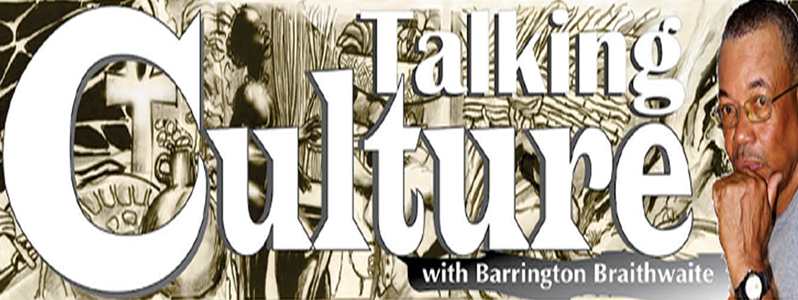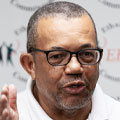THE nations that have ended up colonising and consequently wooing the colonised, strangely enough, have all deployed and boasted their right to civilisation through custodianship of ‘The Arts.’ Even more peculiar, when tracing the manifestation of its timeline, Ancient Khemet (Egypt) is the fount of that organised process.
The story of the advent of The Arts in Guyana so far can be safely traced to the art-based language of the Petroglyphs, expressed by the Mongolian tribes who journeyed to the twin continents of the Americas and populated old Guyana, and are today addressed as the Amerindian Peoples.
But to drift to the Age of Colonisation and its cruel and conflicting normalcy, we also find The Arts expressing its comforting freedoms in drama as early as the 1780s-90s, according to the biographers of the tri-colonies of old Guyana. Masquerade, as a mystical expression in Guyana, was kept alive. Significantly, its features differ from the development influences of masquerade across most of our Caribbean brethren, though, in some cases, as with Barbados, similar rhythms can be identified with the urgent modern organising of ‘The Arts and Crafts’. To quote the late Basil Hinds in a previous article, and reiterated again in the 1959 edition of the Christmas Annual: “Thirty years ago when Governor Denham convened the inaugural meeting of the British Guiana Arts and Crafts Society at Government House, no one then perhaps thought that within a couple of generations the movement would have become as popular as it is today, and that Guianese artists would have been capable of winning world interests.”
 But the gist of this column cannot be to capture the timeline of The Arts in Guyana, which would take a solid volume of intense work, with the participation of overseas archives and also private collections, which local artists cannot fund at an initial stage, at this time. But this present focus, instead, is to pay respect to those who created thresholds of recent trends. How did the ‘Main Street Gallery’ come into being?
But the gist of this column cannot be to capture the timeline of The Arts in Guyana, which would take a solid volume of intense work, with the participation of overseas archives and also private collections, which local artists cannot fund at an initial stage, at this time. But this present focus, instead, is to pay respect to those who created thresholds of recent trends. How did the ‘Main Street Gallery’ come into being?
The answer rests with an awakening in the mid-to-late 1980s that brought to the fore a resurgence of The Arts. The main gallery and gathering place that spearheaded this was Nigel Hughes’ ‘Hadfield Foundation’, situated at Hadfield & Cross Streets, Werk-en-Rust. This movement activated other galleries, including ‘The Arlington Gallery’ on Hadfield and Smyth Streets, Werk-enRust; Ras Camo’s ‘Roots and Culture’ in South Ruimveldt; and Richard Humphrey‘s ‘Tower Arts’ at Hotel Tower on downtown Main Street that bought art and sold art materials. But through it all, the Hadfield Foundation stayed ahead. This was also the period when the Creative Arts Association would write then Director of Art Dr. Denis Williams to petition the usage of the Castellani House (that was empty after the death of President Burnham) to be used as a platform for The Arts.
To his credit, Dr. Williams agreed with the position that the government must have two-thirds managing say, and we had agreed. We launched the first exhibition there; what followed left an impact those still alive will never forget.
The 80s into the early 90s were lucrative for both The Visual and The Performing Arts. The initial process that led to Main Street proper began when they were allowed by the management of the State-owned Guyana Stores Limited to use the eastern walkway outside of the shopping centre to display their work and do business. Some moved to the tip of the Main Street Avenue. The then Mayor thought it was good for the artists to meet tourists with their work; it gave the city a civilised flair, and was also convenient for those who may not be guided by the hotels they were staying at to visit art Galleries. The new private owners of Guyana Stores Limited would subsequently evict the artists, thereby demonstrating, convincingly, that to be empowered with finances did not necessarily mean to be envisioned.
The fact of that period is that there was a brisk and vibrant local arts market. Talking about the hotels, this column cannot be complete without mention of Madam ‘Teix’ Teixeira, who was what can be termed a thorough arts broker. Through her small booth at the Pegasus, the sale of paintings, my local comic books, and artworks from various artists were deposited. About two weeks later, upon paying her a visit, ‘Teix’ would open her record book, and something would be there for you. With ‘Teix’ not there, there was a significant loss. Others tried, in the same location, to emulate her; even Universal Bookstore, but the talent ‘Teix’ had was not replaceable.
The pioneering artists cannot all be highlighted. I can identify, for certain, from memory, the foundation: Omawale Lumumba, Winston Strick, Francis Ferreira, Brian Clarke, Albert Barnwell, a travelling artist, among other brothers like Nunes, who were itinerant, efficient art vendors who stopped by occasionally. However, the stable brothers like Stephen McKenzie, and the sisters in Craft and Clothing that became a part of Main Street all helped to create “the Culture”. Those who, with no malice intended, I have not included by name, would all make the ‘Main Street Gallery’ come to life, and successfully, what it is today.




.png)









